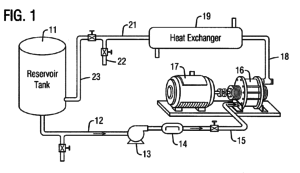U.S. Patent No. 10,011,804 B2 (‘804) issued on July 3, 2018, for “Method of Extracting CBD, THC, and Other Compounds From Cannabis Using Controlled Cavitation.” It was issued to inventor Douglas G. Mancosky of White, Georgia. The applicant is Hydro Dynamics, Inc., a cross-industry cavitation extraction company located in Rome, Georgia. The assignee is EcoXtraction, LLC, a CBD-focused extraction company located in Lafayette, Louisiana. The specification describes a method for extraction of cannabidiol (CBD), tetrahydrocannabinol (THC), and other cannabinoids through controlled cavitation. Cavitation is the process of creating cavities in a liquid resulting from rapid change in pressure. At higher pressures, the cavities implode creating immense shock waves, thus releasing or expelling the requested product. Cavitation technology is not new; as a matter of fact, the technology has been in use for over fifty years, evidenced by U.S. Patent No. 3,902,273 (‘273), issued in 1970, and directed to a method for inhibiting germination of seeds through cavitation. The ‘804 claims are directed to the method of using cavitation to extract various cannabis oils.
Figure 1 illustrates the process of cavitation to extract cannabinoid oils.

The Cooperative Patent Classifications are C11B (producing (pressing, extraction), refining and preserving fats, fatty substances (e.g., lanolin), fatty oils and waxes, including extraction from waste materials, essential oils, perfumes); C07D (heterocyclic compounds (i.e., compounds containing a heterocyclic, or atoms of at least two different elements as members, ring).
Here, the ‘804 patent describes rather old technology but for a new purpose. The ‘804’s specification describes how it is an improvement over U.S. Patent No. 8,430,968 (‘968). The ‘968 patent is directed to methods for extraction of lignocellulosic compounds through controlled cavitation, but the ‘804’s improvement extends that technology to extraction of cannabis compounds. In doing so, the inventor has invented a new process that can be patentable. If you have any questions on the patenting process, please contact Yonaxis for more information.
